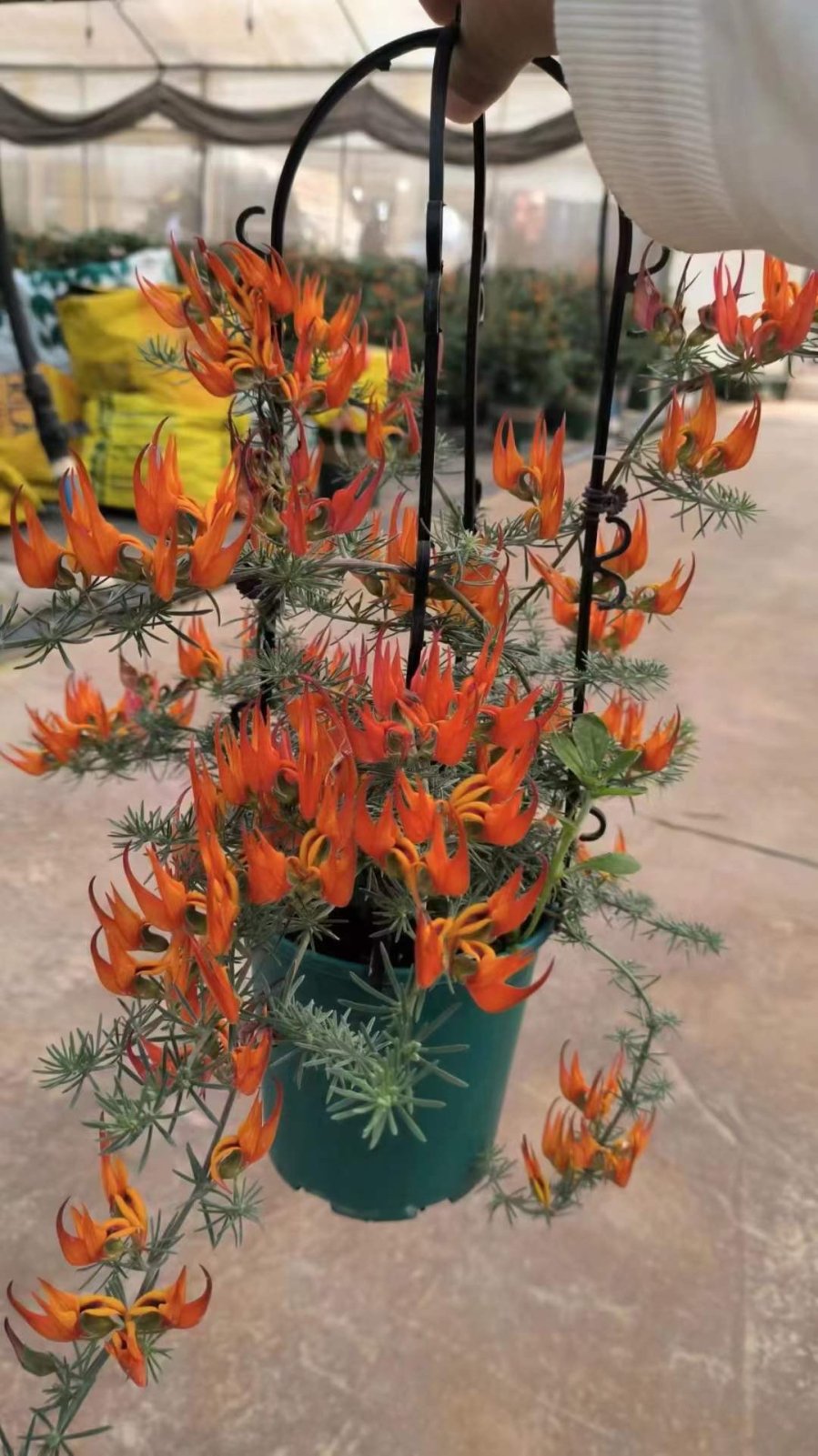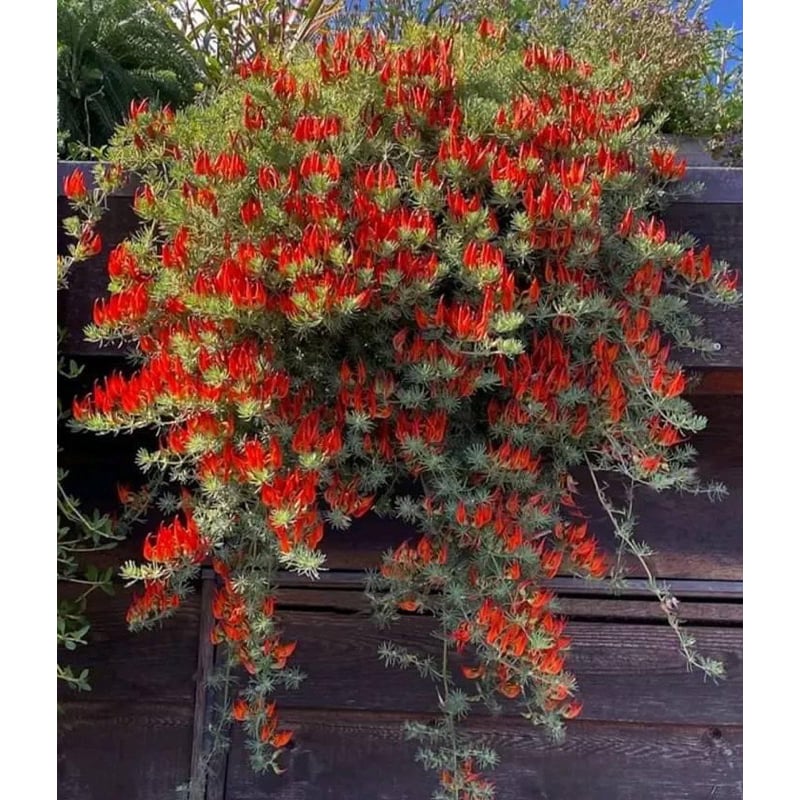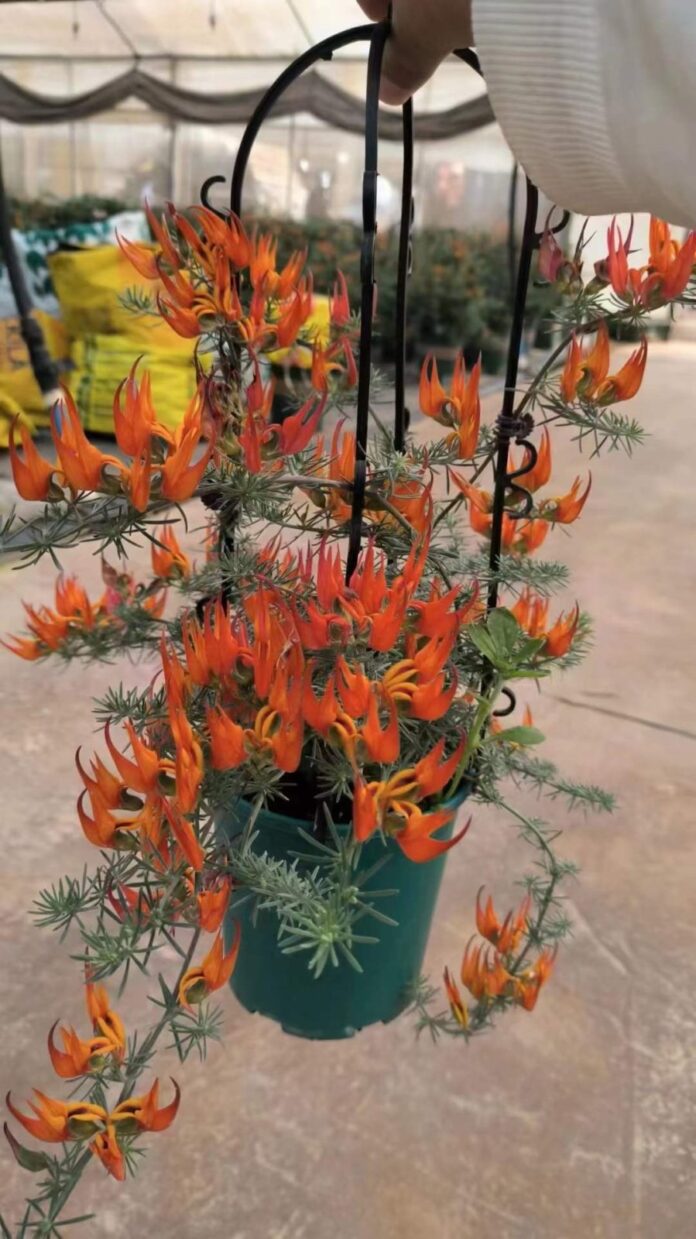The Phoenix Flower: A Stunning Addition to Any Garden
With its graceful trailing stems and fiery blooms, the Phoenix Flower (Lotus berthelotii) is a stunning plant that thrives in hanging baskets, creating a cascade of silvery-green foliage and vibrant flowers. Native to the Canary Islands, this member of the Fabaceae family is also known as the Parrot’s Beak due to the unique shape of its flowers.
One of the most distinctive features of the Phoenix Flower is its trailing habit, with slender stems that can reach up to 2 meters in length. Its tiny, gray-green leaves are only 1-2 cm long and have a silvery sheen, creating a beautiful backdrop for the dazzling display of flowers that appear in late spring to early summer.

The flowers of the Phoenix Flower are its true show-stoppers. With a unique, curved shape, they resemble the beak of a parrot or the claw of a cat. The blooms range in color from deep red to orange and golden yellow, capturing the essence of a magnificent sunset. This striking display has earned the plant a reputation as a symbol of prosperity and good luck, making it a popular choice for gardens and outdoor spaces.
Interestingly, the Parrot’s Beak is quite rare in the wild and is considered nearly extinct. Today, it is primarily propagated in laboratories and cultivated as a houseplant or garden ornamental.
Caring for Your Phoenix Flower
The Phoenix Flower is an ideal plant for those who love gardening but have limited time for maintenance. It is a fast-growing, hardy plant that is easy to care for.
1. Soil and Planting
Phoenix Flowers prefer well-drained, airy soil with moderate moisture retention. When planting in containers, use a nutrient-rich potting mix combined with some garden soil to ensure adequate drainage and moisture balance. Avoid using lightweight soil as it tends to dry out quickly, which can be detrimental during the summer months.
2. Container Choices
Given its trailing habit, hanging baskets are an excellent choice for showcasing the graceful stems and foliage. Alternatively, you can plant them directly in the ground in warmer climates, where they will form a beautiful ground cover.
3. Light Requirements
Phoenix Flowers thrive in full sun, which helps maintain the bright silver color of the leaves and encourages abundant flowering. However, during intense summer heat, provide some light shade to prevent the plant from wilting.
4. Watering
Although drought-tolerant, Phoenix Flowers perform best when the soil is kept slightly moist. Water generously when the top inch of soil feels dry, especially during the hotter months when evaporation rates are higher.
5. Fertilizer
To promote vigorous growth and abundant flowering, feed your Phoenix Flower with a slow-release or water-soluble fertilizer every 10 days during spring and autumn. For a longer blooming period, increase the frequency of fertilization with a phosphorus-rich fertilizer during bud formation.
6. Seasonal Care
Summer: Protect the plant from intense midday sun and provide extra water during extended periods of heat.
Winter: Temperatures below 5°C can be harmful. If you live in a region with cold winters, bring your Phoenix Flower indoors to protect it from frost.

Why You Should Plant the Phoenix Flower Today
The Phoenix Flower is not just a beautiful ornamental plant, but it also holds significant positive symbolism in feng shui. The vibrant red flowers represent prosperity, good luck, and positive energy, making it an excellent choice for bringing a vibrant and auspicious presence to your living space.
The Kitchen Triangle: A Guide to Optimal Layouts for Your Heart of the Home
Bed Placement: Mastering the Art of a Good Night’s Sleep
The placement of your bed and stove is not just about aesthetics and functionality; it’s also about creating a harmonious and healthy living environment. Getting these placements wrong can lead to financial losses and disharmony in the home. So, what are the three directions to avoid when placing your stove, and the three locations to steer clear of when positioning your bed?
Title: Superstition of the Ancients: The Large Tree in Front and the Fish Tank at the Back, a Drain on Wealth – What Does it All Mean?
“Gardening and aquascaping are beloved hobbies that are said to improve the feng shui of a home. However, in the past, people were wary of having tall trees in the front yard and fish ponds in the back. But why was that the case? Uncover the reasons behind this intriguing belief and explore the world of nature-inspired hobbies that have captivated many throughout history.”








































